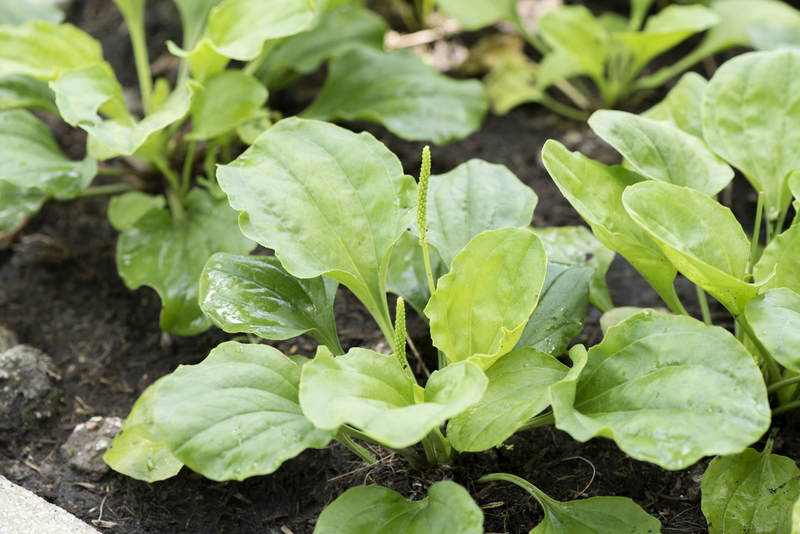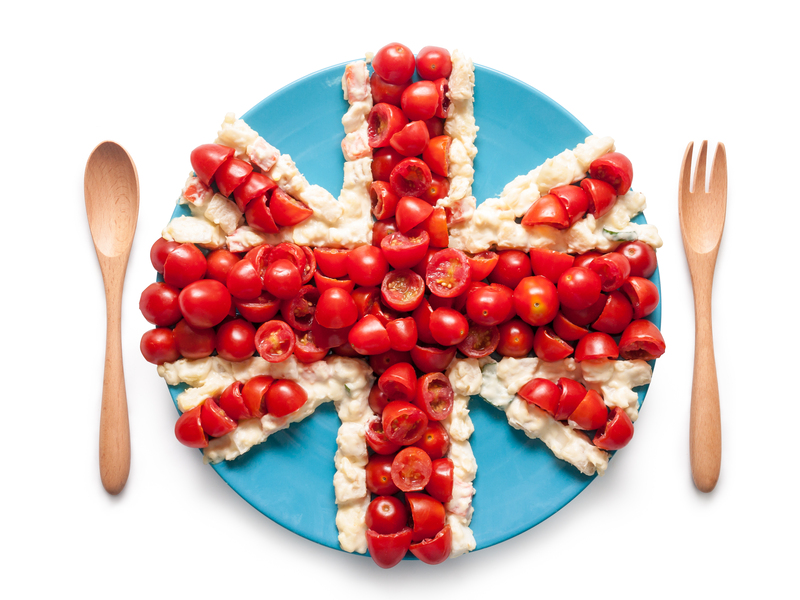Fur and Flora: Nurturing a Dog-Friendly Garden
Posted on 08/06/2025
Fur and Flora: Nurturing a Dog-Friendly Garden
Creating a safe, vibrant, and enjoyable outdoor space for your furry companion and beautiful plants is a rewarding journey. If you love greenery and also adore your canine friend, designing a dog-friendly garden allows you to cultivate a harmonious haven where both fur and flora can flourish. In this comprehensive guide, we'll explore practical tips, landscaping ideas, and essential plant choices to nurture a garden that's both lush and safe for dogs.
Why Create a Dog-Friendly Garden?
Traditional gardens are often filled with delicate blooms and toxic plants not suitable for pets. However, a thoughtfully designed dog-safe garden ensures your pet can explore, relax, and play without the risk of injury or poisoning. Plus, a dog-friendly landscape can significantly improve your pet's mental and physical well-being, foster bonding, and elevate the beauty and usability of your outdoor space for the whole family.

Essential Elements of a Dog-Friendly Yard
1. Safe Plant Selection
The heart of a dog-friendly garden lies in choosing the right plants. Many common decorative plants and flowers are toxic to dogs. To ensure the safety of your fur baby, select dog-safe plants and avoid those that pose health risks. Here's how:
- Research plant toxicity: Before planting, consult reputable resources like the ASPCA's toxic plant list.
- Prioritize non-toxic choices: Opt for dog-safe varieties such as camellias, sunflowers, roses, snapdragons, and basil.
- Avoid hazardous plants: Steer clear of foxglove, azaleas, oleander, sago palm, lily of the valley, and autumn crocus, which can be extremely poisonous to pets.
- Use raised beds or barriers: If you must grow potentially harmful plants, ensure they are in inaccessible areas or behind fencing.
2. Pet-Friendly Ground Covers
Lawns and traditional ground covers like mulch or gravel can pose challenges in a pet-safe landscape. Dogs love to dig, run, and lounge, so durable, non-toxic, and easy-to-maintain ground covers are best:
- Grass varieties: Consider Bermuda, Buffalo, or Kentucky Bluegrass, which withstand heavy traffic from active dogs.
- Mulch types: Use cedar or pine bark, but avoid cocoa mulch, which can be toxic due to theobromine.
- Alternative ground covers: Creeping thyme, clover, and Irish moss are attractive, non-toxic, and dog-proof options.
- Practical pathways: Lay out gravel, pavers, or flagstones to create defined doggy trails and minimize lawn wear.
3. Garden Design for Dogs
Thoughtful garden design not only enhances the aesthetics but also accommodates your dog's instincts. Consider these design elements:
- Explore dog pathways: Incorporate dedicated trails for dogs along fences, which also help reduce stress and repetitive running paths.
- Create shaded areas: Dogs need relief from the sun, so plant shade trees or build pergolas for cool resting spots.
- Separate play and plant zones: Use low fences or raised borders to protect delicate beds and give dogs an area to play freely.
- Include a digging pit: Fill a corner with sand or soft soil where it's acceptable for your dog to dig.
- Add water features: A shallow fountain or splash pool keeps dogs cool and entertained on hot days.
Best Plants for a Dog-Safe Garden
Dog-Friendly Flowers
- Roses (Rosa spp.): While non-toxic, watch out for thorns.
- Snapdragons (Antirrhinum majus): Cheerful flowers safe for pets.
- Sunflowers (Helianthus): Hardy and safe, perfect for a vibrant garden.
- Marigolds (Calendula officinalis): Pet-safe and great for deterring pests.
- Camellias (Camellia spp.): Beautiful, non-toxic shrubs.
Safe Shrubs and Herbs
- Basil
- Sage
- Rosemary
- Blueberry Bushes
- Hawthorn
Dog-Safe Ground Covers
- Creeping thyme
- Clover
- Irish moss
- Elfin thyme
Plants to Avoid in a Pet-Friendly Landscape
- Oleander
- Foxglove
- Lily of the valley
- Azaleas and rhododendrons
- Sago palm
- Daffodils
- Ivy
Garden Safety Tips for Your Dog
1. Avoid Toxic Chemicals
Many traditional pesticides, herbicides, and even fertilizers can be harmful to your pets. Switch to organic gardening methods, such as compost or natural pest control, for a safer environment. Always read labels and store chemicals out of your dog's reach.
2. Secure Fencing
Keep your dog safe from neighboring hazards and prevent escape by installing sturdy, secure fencing. Remember, some breeds are excellent jumpers or diggers, so reinforce the base and ensure gates are always latched.
3. Remove Hazards and Debris
Regularly inspect your garden for sharp objects, broken glass, or trash that could harm your pet. Keep compost piles and garbage bins secured and clear away any potentially dangerous yard tools after each use.
4. Provide Clean, Fresh Water
A dog-friendly landscape isn't complete without a dependable source of water. Set up a bowl in a shady spot or add a pet water fountain to make hydration easy during outdoor play.
Enrichment Features for a Canine Garden
Nurturing both fur and flora means engaging your dog's body and mind in the garden.
1. Sensory Elements
Dogs experience the world through their noses. Plant scent-rich herbs like lavender, mint, or basil, which provide delightful aromas and safe nibbles.
2. Stimulating Activities
- Agility Obstacles: Low tunnels, jumps, and ramps offer physical exercise.
- Interactive Toys: Rotate outdoor-safe toys for mental and physical stimulation.
- Digging Boxes: Train your pup to dig in a designated area, filled with sand or soft earth, to spare your favorite flower beds.
3. Relaxation Zones
Design comfy shaded areas with dog beds or low benches, so your furry friend can nap while you tend the plants or simply enjoy the view together.
Dogs and the Impact on Garden Design
Every dog has a unique temperament and set of behaviors. Some are natural explorers, while others prefer quiet lounging. Design your dog-friendly garden with your pet's personality in mind:
- Active breeds may need larger play spaces and reinforced pathways.
- Older or injured dogs benefit from gentle slopes and non-slip surfaces.
- Small dogs might require protection from large, excitable breeds or wild animals.
You know your dog best--observe how they interact with the garden and adjust accordingly for harmony between your cherished fur and flora.
Addressing Common Garden Challenges with Dogs
1. Digging
Many dogs love to dig, which can wreak havoc on flower beds and lawns. Redirect this behavior by:
- Providing a dedicated digging area.
- Rewarding use of the doggie sandbox while gently discouraging digging elsewhere.
- Planting robust ground covers in high-traffic or problem areas.
2. Urine Spots
Dog urine can burn grass and plants due to its nitrogen content. To counteract damage:
- Water down spots after your dog urinates to dilute the nitrogen.
- Train your dog to use a specific "potty area" with gravel or mulch.
- Choose resilient grass varieties or ground covers that tolerate pet use.
3. Plant Trampling
Dogs often run the same route, creating unsightly paths or damaging plants. Address this by designing:
- Defined pathways with pavers or stone.
- Barrier plantings or low fences to protect vulnerable beds.
- Open, easily accessible spaces for canine play.
Sustainable Practices for Dog-Friendly Gardens
Embrace eco-friendly landscaping by adopting sustainable methods that benefit both pets and plants:
- Install rain barrels for watering and reduce runoff.
- Use compost to enrich soil naturally.
- Plant native species, which require less maintenance and are safer for wildlife.
- Create a habitat for beneficial insects, birds, and pollinators.
Maintaining Your Dog-Safe Garden: Tips & Tricks
- Regularly inspect for toxic plants or hazardous materials.
- Keep grass trimmed and pick up pet waste promptly.
- Check fences and gates for gaps or wear.
- Wash your dog's paws after gardening to prevent ingestion of mulch or soil residues.
- Refresh water frequently in bowls or fountains.

Benefits of a Dog-Friendly Garden for People and Pets
A dog-friendly backyard is more than just a safe space--it's a shared sanctuary that strengthens the bond between you and your four-legged friend. Key benefits include:
- Physical exercise: Dogs can run and play safely.
- Mental stimulation: New sights, smells, and textures enrich your dog's life.
- Stress reduction: Nature soothes both pets and owners, promoting relaxation and well-being.
- Family fun: Gardens designed with pets in mind are often welcoming and functional for kids, guests, and the whole household.
Conclusion: Cultivating Harmony Between Fur and Flora
With mindful planning and a little creativity, you can create a dog-proof garden that doesn't sacrifice style or serenity. Blend pet-safe flora with clever landscaping to realize a space where wagging tails and lush greenery exist in perfect harmony. From plant choices and pathways to enrichment features, your dog-friendly garden can be a blooming paradise for the entire family--both two-footed and four-pawed alike.
Start nurturing your fur and flora paradise today. Your pup--and your plants--will thank you!

